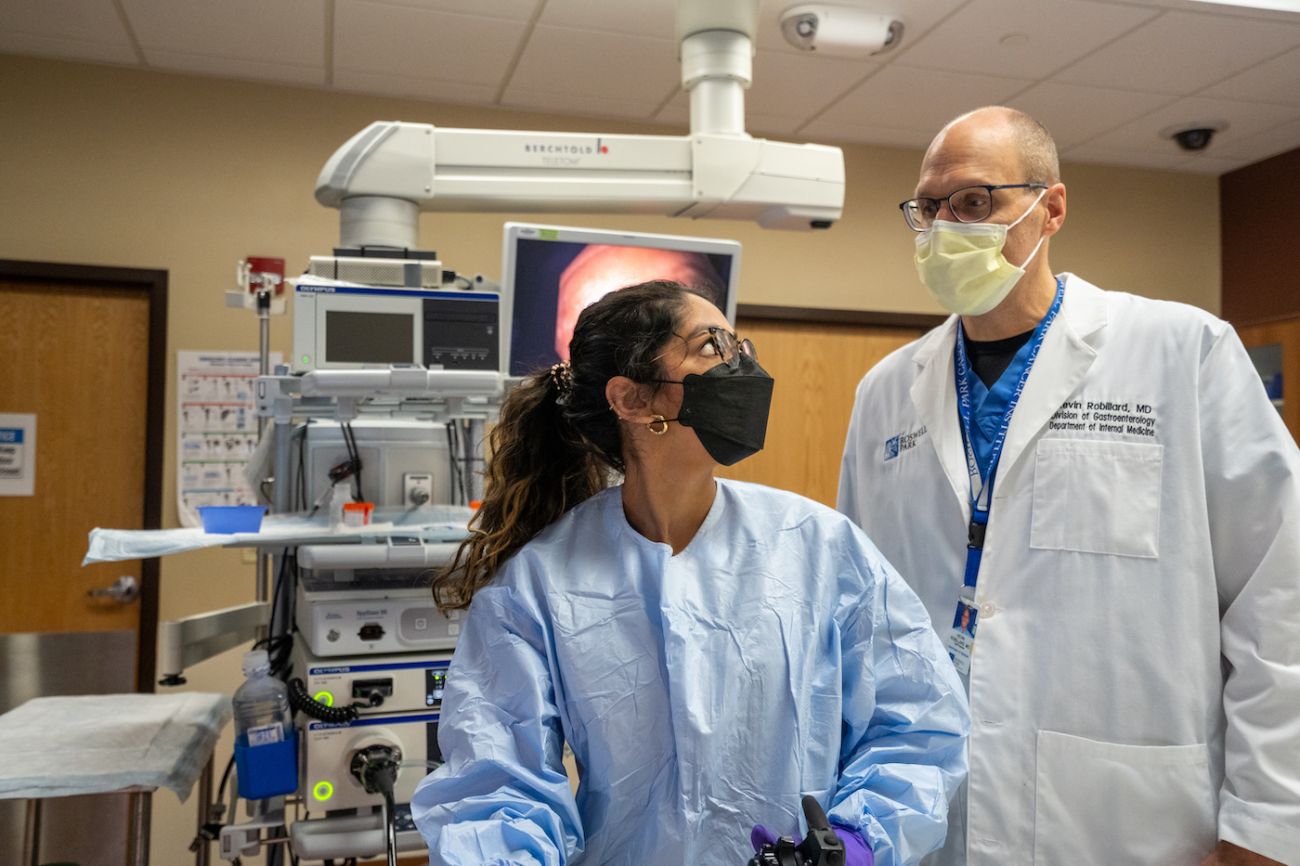Advanced endoscopic approaches allow many patients with early-stage colorectal cancer or large precancerous lesions to avoid an operation
Endoscopy is a procedure which uses a flexible tube outfitted with a light and camera to see inside the digestive tract. When the endoscope is inserted into the rectum to examine the part of the intestine called the colon (or bowel) the procedure is called a colonoscopy.
Colonoscopy is the gold standard way to detect colon cancer, and if polyps or precancers are found, they can be treated during the same procedure. Physicians will employ special tools passed through the endoscope to remove small polyps and lesions.
Endoscopic mucosal resection
Ordinarily, larger polyps and tumors that couldn’t be removed during a colonoscopy would require surgery. However, in the experienced hands of Roswell Park endoscopists, many larger polyps and cancerous growths that would otherwise require surgery, can be removed effectively with an advanced technique called endoscopic mucosal resection.
Instead of an incision on the belly, endoscopic mucosal resection uses the endoscope as in a colonoscopy. A special fluid is injected into the submucosal layer to lift the area, allowing the physician to cut off the superficial layer, and remove a larger polyp or growth.
These advanced techniques can only be performed by endoscopists with specialized training. All the endoscopists at Roswell Park have these additional credentials, which involves fellowship training in Advanced Endoscopy or Surgical Oncology and STAR Certification from the American Society for Gastrointestinal Endoscopy (ASGE).
Endoscopic removal of colon cancer or large pre-cancerous lesions often results in avoiding surgery, chemotherapy and enjoying a meal after the procedure. Here at Roswell Park Comprehensive Care Center, we have doctors with specialized and advanced training to provide this as a possible option in your care.
What types of tumors can be removed with endoscopy?
Whether or not your colon cancer can be removed in this manner will depend on several characteristics such as its size (up to several inches) and how deeply it appears to have grown into the bowel wall.
Polyps and cancers limited to the inner bowel wall layer called the mucosa, are good candidates for endoscopic removal. These are called high grade dysplasia, carcinoma in situ, or intramucosal carcinoma. Once a cancer spreads into the submucosa layer, metastasis is possible.
Sometimes, however, it’s not known how deep the cancer may have grown, until it’s completely removed with endoscopy. If it has grown too deep — into the muscle layer of the bowel wall — a patient may need have surgery to remove all the tissue layers of that area of the bowel.
Benefits of endoscopic tumor removal
Compared to an operation, endoscopic removal offers several benefits. An operation to remove colon cancer involves an inpatient hospital stay and limits on activities (including eating) for several days. Some physical activities may be limited for several weeks.
The experience of an endoscopic tumor removal is similar to a routine colonoscopy but may take longer. Recovery from an endoscopic resection is typically 24 hours or less and you’ll have no incisions to heal. Due to sedation, you’ll need a driver to transport you home. Patients can usually resume eating and most activities right away.
What’s next after endoscopy?
After the cancer is removed, it will be examined and analyzed by our Pathology department. Depending on the findings, your follow up may be a colonoscopy in 6 months to 3 years. Occasionally, a growth is determined to be too deep for endoscopic removal alone and then a follow up surgery is recommended.

